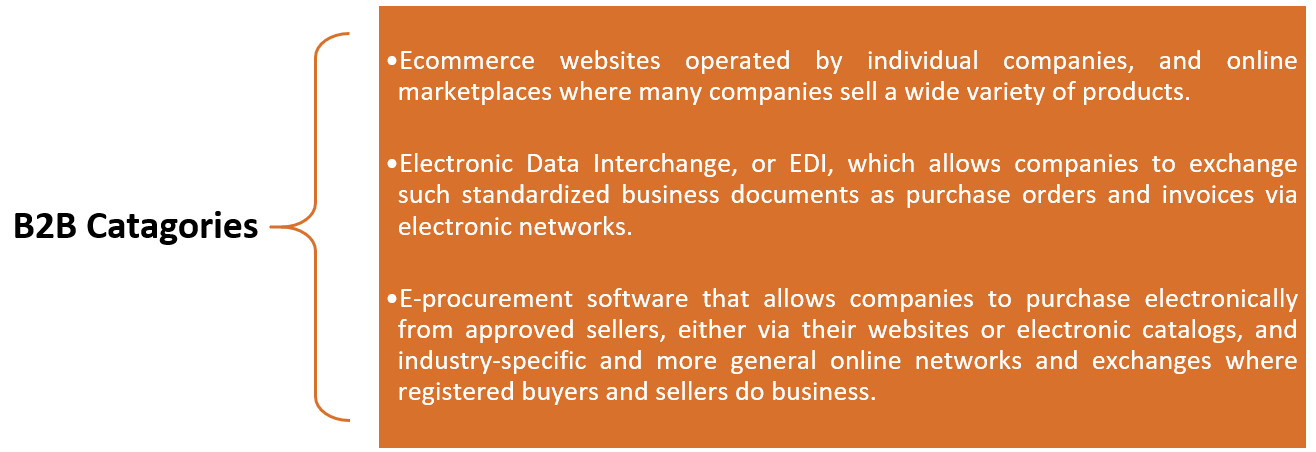B2B Ecommerce Challenges & Solutions
B2B e-commerce, or business-to-business e-commerce, refers to online transactions between businesses. The increasing growth of B2B e-commerce is undeniable. While B2B e-commerce has numerous benefits such as faster ordering, improved accuracy, and increased efficiency, it also comes with its own set of challenges. Here are some of the main challenges of B2B e-commerce and tips on how to address them.
- Complex Sales Cycles: B2B e-commerce and B2C e-commerce may share many similarities, but there are also significant differences between the two. The buying process in B2B is typically more complex than in B2C. In a B2B transaction, multiple decision-makers are often involved, and the purchase may require approval from higher-ups within the company along with long decision-making processes & a complex sales cycle. As a result, the e-commerce platform must provide information and features that cater to each stakeholder in the buying process, making it more challenging to design and implement.
Businesses can overcome this challenge by creating a personalized and informative buying experience for each stakeholder in the buying process. This can be achieved by providing relevant product information, clear communication channels, and access to product demos and trials.
- Integration with Legacy Systems: Many businesses still use legacy systems that don’t integrate easily with newer e-commerce platforms. So, one of the significant challenges for B2B e-commerce businesses is integrating technology across various platforms. With so many different software programs available to manage inventory, process payments, and track orders, integrating them into one cohesive system can be daunting. This lack of integration can lead to inefficiencies and inaccuracies, which can hinder the adoption of B2B e-commerce.
Businesses can overcome this challenge by adopting an e-commerce platform that integrates seamlessly with legacy systems. The platform should also provide APIs and connectors that facilitate data exchange between different systems.
- Customization Requirements: B2B customers often require customized products and services. Meeting these customization requirements through an e-commerce platform can be challenging, as it requires extensive configuration capabilities, a flexible platform architecture, and real-time collaboration capabilities.
This challenge can be addressed by offering configurable products and services through an e-commerce platform. The platform should also provide real-time collaboration capabilities that allow customers to work with sales representatives to configure and order customized products.
- Complex Pricing and Discounting: B2B pricing structures can be complex and often involve volume discounts, contractual agreements, and special pricing arrangements. Moreover, since transactions often involve large sums of money and long-term partnerships, buyers need assurance that they are making the right decision when choosing a seller or product. Managing these pricing structures and trust level can be challenging in an e-commerce environment and requires a sophisticated pricing engine to ensure accuracy and compliance.
Businesses can overcome this challenge by adopting a sophisticated pricing engine that can manage complex pricing structures. The engine should be able to apply discounts, handle volume-based pricing, and support contractual agreements.
- Shipping and Logistics: B2B e-commerce often involves large and bulky products that require specialized shipping and logistics. Ensuring that the products are delivered on time, at the right location, and in the right condition can be a significant challenge for B2B e-commerce platforms. This challenge can be addressed by partnering with third-party logistics providers that specialize in B2B shipping and logistics. The e-commerce platform should also provide real-time shipping rates and tracking information to customers.
- Data Security: B2B transactions often involve sensitive data such as financial information and customer data. Ensuring that the e-commerce platform is secure and that data is protected from cyber threats is critical in B2B e-commerce. Businesses can overcome this challenge by adopting a secure e-commerce platform that complies with industry standards such as PCI DSS and GDPR. The platform should also provide multi-factor authentication, encryption, and regular security updates to protect sensitive data.
- Overcoming the challenges of B2B e-commerce requires a multifaceted approach that involves addressing the specific needs of each challenge. Despite these challenges, however, continued advancements in technology will help overcome them as online platforms continue to evolve allowing more streamlined operations throughout every facet from order processing through delivery. Overall, businesses can overcome the challenges of B2B e-commerce by adopting a comprehensive approach that addresses the specific needs of each challenge.

